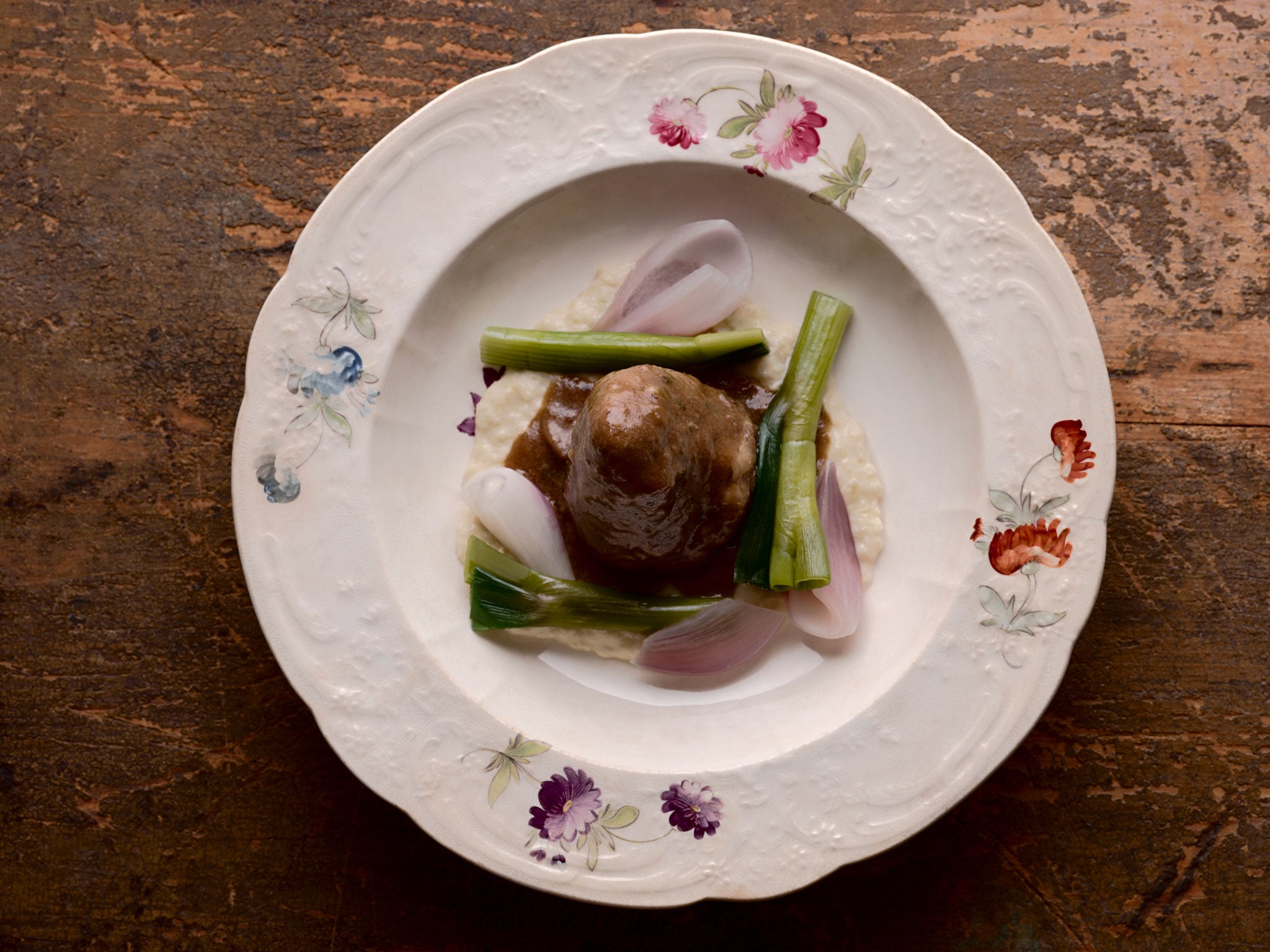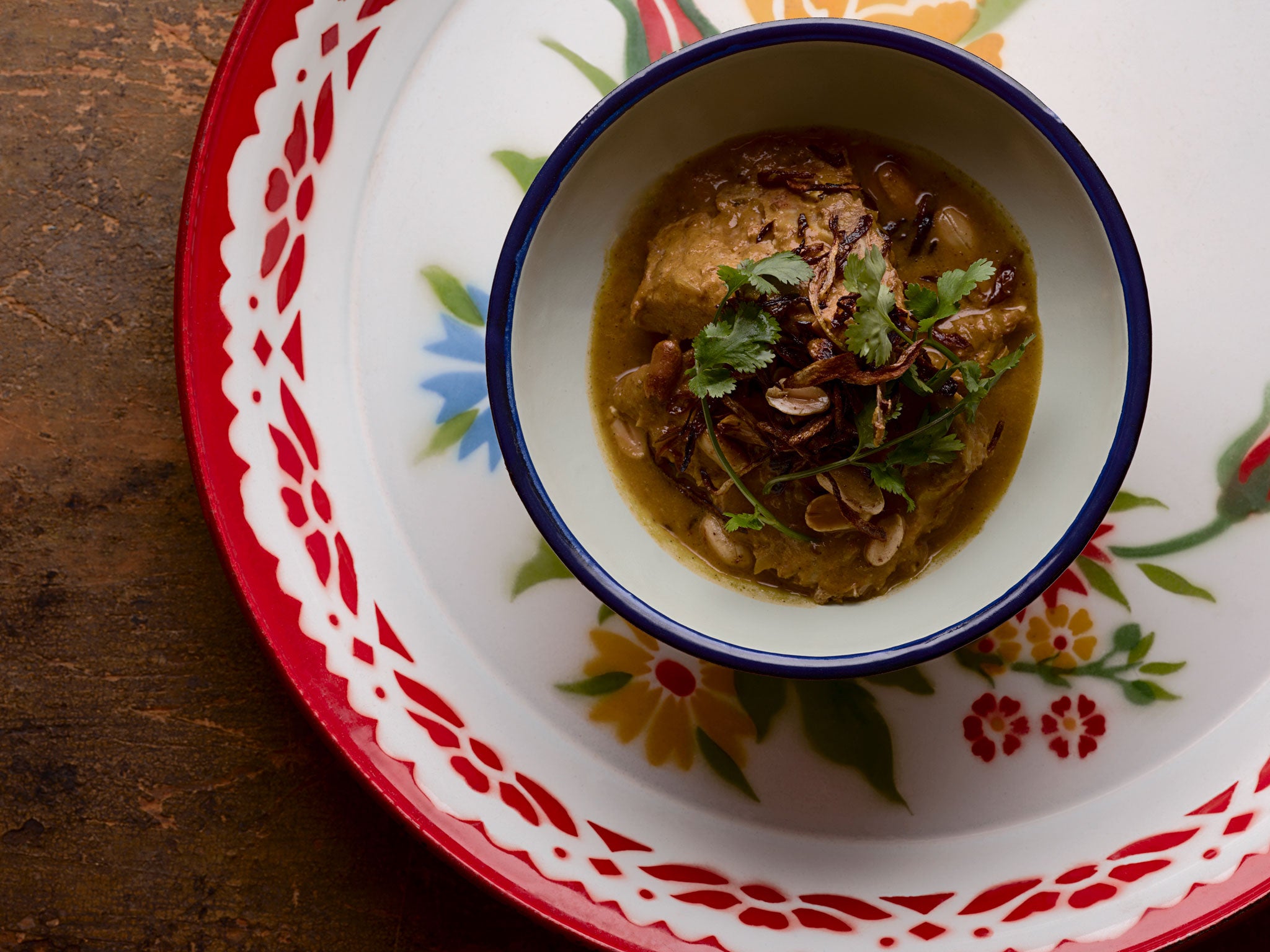Your support helps us to tell the story
From reproductive rights to climate change to Big Tech, The Independent is on the ground when the story is developing. Whether it's investigating the financials of Elon Musk's pro-Trump PAC or producing our latest documentary, 'The A Word', which shines a light on the American women fighting for reproductive rights, we know how important it is to parse out the facts from the messaging.
At such a critical moment in US history, we need reporters on the ground. Your donation allows us to keep sending journalists to speak to both sides of the story.
The Independent is trusted by Americans across the entire political spectrum. And unlike many other quality news outlets, we choose not to lock Americans out of our reporting and analysis with paywalls. We believe quality journalism should be available to everyone, paid for by those who can afford it.
Your support makes all the difference.I love making dishes out of cheap cuts, as there is something particularly satisfying about making a delicious meal for next to no money. We often tend to take the easy option when cooking at home, and buy cuts which are simple and quick to cook instead of something that may be a bit more challenging and which takes more time – but believe me there are benefits: namely, flavour.
You can make any of the dishes below with other cuts from the same animal, depending on what your butcher has available.
Pork shank curry
Serves 4
A friend of mine recently described a chicken curry he had in Dalston that was cooked, or finished, with peanut butter. I worked out from the way he described it what was involved . I had some mini pork shanks and pork osso bucco in my freezer from Donald Russell. Both worked really well with the spicy peanut sauce. You could use another single muscle like neck if you wish.
1.5kg pork shank, preferably cut on the bone
Flour for dusting
2-3tbsp vegetable or corn oil
4 cloves
1tsp coarsely ground black pepper
The seeds from 12 cardamom pods
1 black cardamom pod (optional)
A small piece of cinnamon or cassia stick
1tsp black or yellow mustard seeds
1tsp cumin seeds
2tsp ground cumin
1tsp fennel seeds
1tsp ground turmeric
2tsp fenugreek seeds
1tbsp ghee
4 onions, peeled and finely chopped
2-3 medium green chillies, sliced with stalk removed
6 cloves of garlic, peeled and finely grated or crushed
40g root ginger, scraped and finely grated
A good pinch of saffron
2tbsp fenugreek leaves
2tbsp curry leaves
1tbsp tomato purée
1 litre chicken stock; a good cube will do
3-4tbsp peanut butter
2-3tbsp chopped coriander leaves
To serve
3-4 large shallots, peeled, halved and thinly sliced
2-3tbsp salted peanuts
1tsp ground cumin
Season the pork and lightly dust with flour. Heat the oil in a frying pan and fry the pieces of pork for a few minutes, turning them regularly until nicely coloured. Meanwhile put all of the spices, except the saffron, fenugreek and curry leaves in a frying pan and heat them over a medium heat for about 3-4 minutes, turning them regularly with a spoon until they are lightly browned. Add the ghee, onions, chilli, ginger, saffron, fenugreek and curry leaves and continue cooking with a lid on for 4-5 minutes, stirring every so often. Now add the tomato purée and chicken stock, bring to the boil and simmer for 10 minutes.
Add the pork, bring to the boil and simmer gently for about 45 minutes, topping up with a little water if necessary. Take a ladle of the sauce and blend in a liquidiser until smooth and return to the pan with the peanut butter. While the curry is cooking, heat a tablespoon of oil in a frying pan and cook the shallots for 4-5 minutes on a medium heat, stirring regularly until they begin to go crisp and golden. Now add the peanuts and cumin and continue cooking until crisp but not dark. Transfer to a plate lined with kitchen paper.
To serve, add the coriander, simmer for a minute and transfer to a serving dish. Scatter the crispy shallots and peanuts on top.
This can be made a few days in advance, just leave the coriander – and the crispy shallots, which you can store in a sealed container – to the last minute.
Braised lamb hearts with alliums
Serves 4
My gran used to make these once a week with a simple parsley and thyme stuffing. I always used to look forward to the hearts coming out of the oven and regarded it as a bit of a treat.
4 large lambs' hearts, trimmed of any sinew or excess fat
Flour for dusting
Vegetable oil for frying
8 cocktail sticks
For the sauce
1 medium onion, peeled, halved and finely chopped
A good knob of butter
1tbsp plain flour
½tsp tomato purée
100ml red wine
400ml beef stock, or a good quality stock cube dissolved in that amount of water
1 bay leaf
For the stuffing
1 onion peeled and roughly chopped
1tsp fresh thyme leaves
A good knob of butter
60g fresh white breadcrumbs
1 large red onion, left whole
6 spring onions, trimmed and halved
A good knob of butter
For the onion purée
2 medium onions, peeled, halved and roughly chopped
500ml chicken stock
2tbsp double cream

Preheat the oven to 175C/gas mark 4. First make the sauce. Melt the butter in a thick-bottomed pan and gently cook the onion for 2-3 minutes until lightly coloured. Add the flour and tomato purée and stir well over a low heat for a minute. Gradually add the red wine, stirring to prevent lumps forming, and gradually add the beef stock. Bring to the boil, add bay leaf and simmer gently for 20 minutes.
Meanwhile, make the stuffing. Gently cook the onion and thyme in the butter for a minute to soften them, then stir in the breadcrumbs and season. Insert the point of a small knife into the cavity of the heart and remove any sinews, allowing room for the stuffing. Force as much stuffing into the cavity as possible and secure with a cocktail stick. Season and lightly flour the hearts. Heat a tablespoon or so of vegetable oil in a frying pan and lightly brown the hearts, turning them so that they are evenly coloured.
Put the hearts into a casserole dish with a lid and cook in the oven for 1½ hours, turning them every so often. Put the whole red onion into the oven at the same time and bake it for about an hour or until soft, leave to cool. Quarter and separate the leaves and put to one side in a saucepan with a knob of butter and the spring onions.
While the hearts are cooking make the onion purée. Put the onions in a saucepan with the chicken stock, season and simmer for about 30-40 minutes until the onions are soft and the liquid has almost evaporated; add the cream and simmer until the liquid is just coating the onions. Blend in a liquidiser or Nutri- bullet until smooth and return to the pan. Simmer until the purée is really thick, remove from the heat and keep warm.
The sauce for the hearts should be a thick, coating consistency; if not, transfer the sauce to a pan and simmer it until it's thick.
To serve, heat the onions and spring onions in the pan with a tablespoon of water for 2-3 minutes until the spring onions are tender.

Join our commenting forum
Join thought-provoking conversations, follow other Independent readers and see their replies
Comments